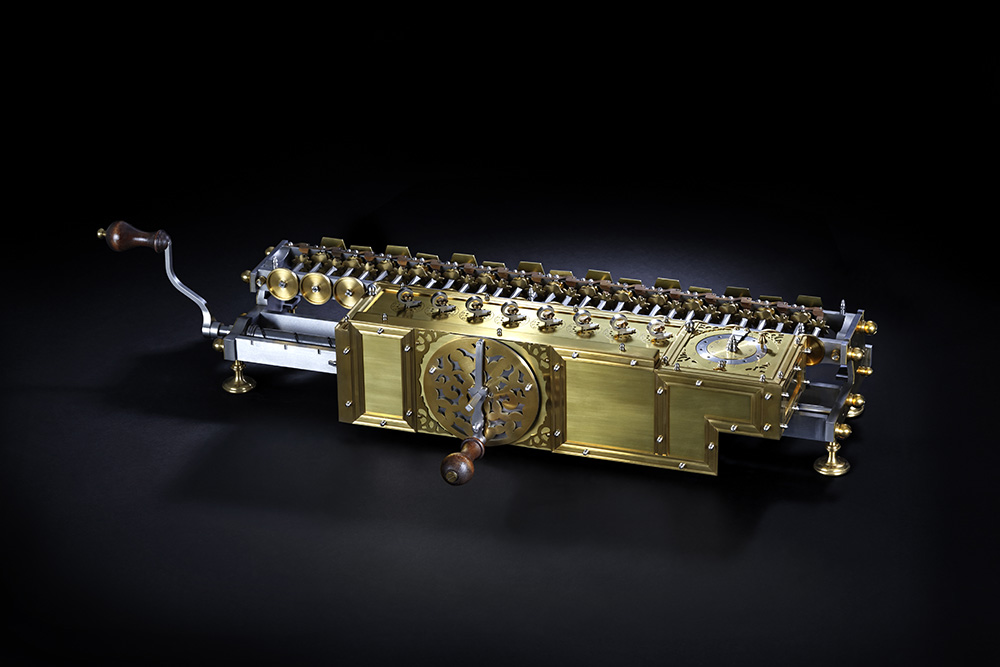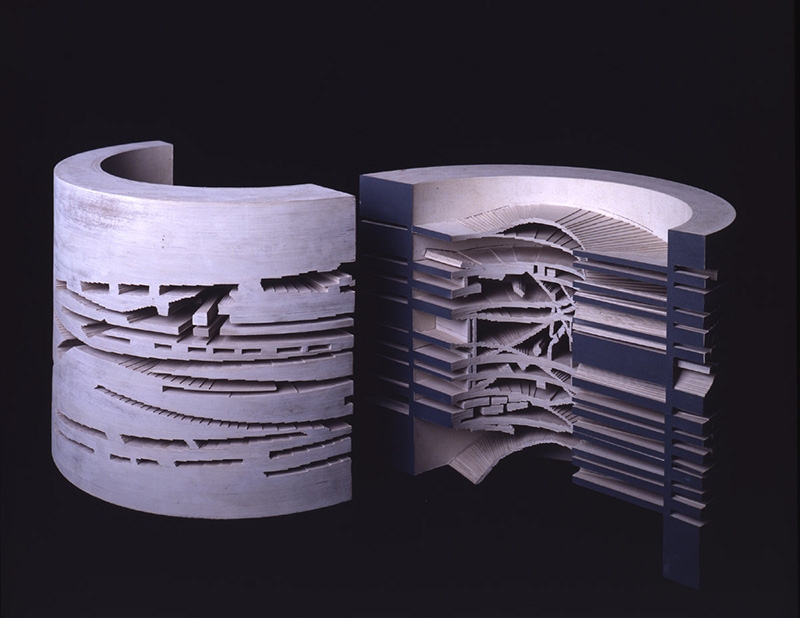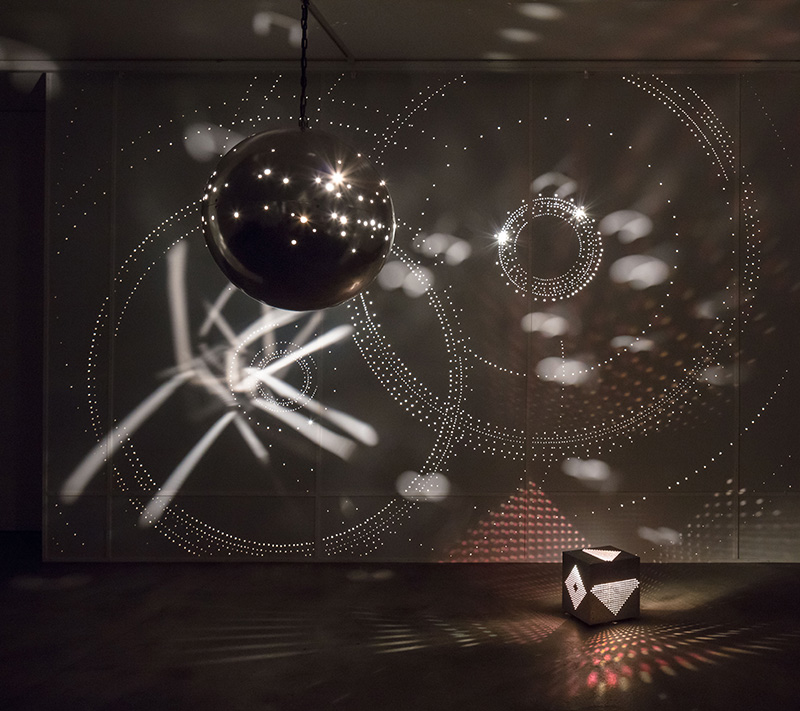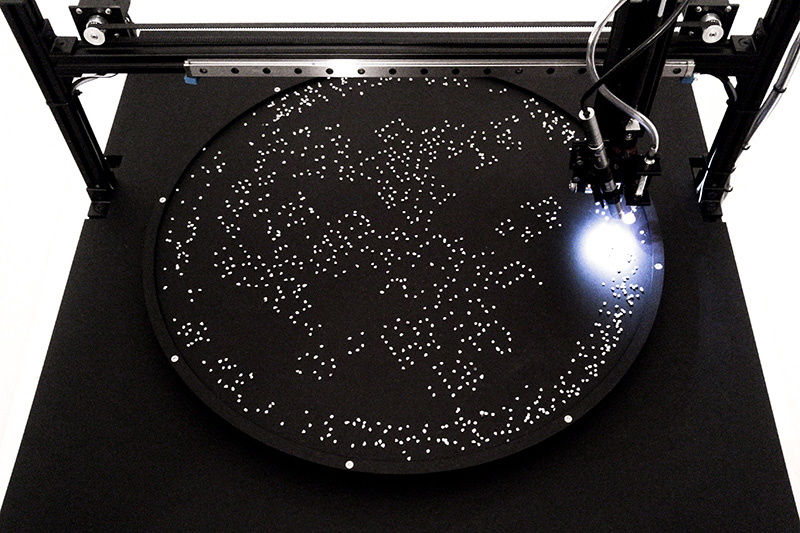ART-PRESENTATION: DIA-LOGOS
 The exhibition “DIA-LOGOS, Ramon Llull and the Ars Combinatoria” explores the impact of the philosopher Ramon Llull (c. 1232-1316) on the arts, literature, science and technology. This controversial man, admired and scorned by some of the most enlightened minds in European culture, has acquired a new importance in the current debate on the ways knowledge is shared with others.
The exhibition “DIA-LOGOS, Ramon Llull and the Ars Combinatoria” explores the impact of the philosopher Ramon Llull (c. 1232-1316) on the arts, literature, science and technology. This controversial man, admired and scorned by some of the most enlightened minds in European culture, has acquired a new importance in the current debate on the ways knowledge is shared with others.
By Efi Michalazrou
Photo: ZKM|Center for Art and Media Archive
The enormous influence of Ramon Llull’s radical concept is the main focus of the exhibition “DIA-LOGOS, Ramon Llull and the Ars Combinatoria” at ZKM|Center for Art and Media Karlsruhe, which presents numerous treasures from and about Llull from regions all over the globe. By merging historic and documentary materials with contemporary artworks that engage with Llull’s work, the exhibition enables insights into surprising and thus far unknown facets of Llull’s way of thinking and his work. The Catalan Ramon Llull was one of the most prominent European writers, philosophers and scientists of 13th and 14th Centuries. Llull was an extremely talented and productive person, known to have written at least 265 works in Catalan, Arabic and Latin. In 1265 he became a tertiary Franciscan, but had some very dangerous ideas. He wrote numerous religious treatises and made several missions to northern Africa, trying to convert Arab Muslims of Tunis to Christianity. Ramon Llull formalized the three monotheistic religions: Judaism, Christianity and Islam, in a type of theological comparison, to give religious truth validity. From this formalization of terms, arose the logical school of ars combinatoria, which is still visible in the current artistic present. Around 1275, Llull designed a method, based on something like a logical machine, which he first described in full in his “Ars magna generalis ultima or Ars brevis” 1305). This was a method of combining religious and philosophical attributes selected from a number of lists. It was intended as a debating tool for winning Muslims to the Christian faith through logic and reason. Llull’s inspiration for the Ars magna is thought to have come from observing a device called a zairja, which was used by medieval Arab astrologers to calculate ideas by mechanical means. It used the 28 letters of the Arabic alphabet to signify 28 categories of philosophic thought. By combining number values associated with the letters and categories, new paths of insight and thought were created. The content of the exhibition develops around two focuses: On the one hand, Llull’s ideas reveal media archaeological and philosophical aspects, which make his work indispensable as a basis for today’s discourse with media ecologies and learning algorithms. On the other hand, his universal, rational system of knowledge, opens up a highly relevant attitude today, which is realized as a dialog beyond the cultures and boundaries of the three monotheistic religions, in a productive analysis with the others. The centerpiece of the historical documents is the “Breviculum ex artibus Raimundi Lulli electrum” which represents the life of the Spanish philosopher in suggestive miniatures. In the exhibition, is on presentation a functional reproduction of his calculator, which he developed in 1672 and which was able to carry out the four basic arithmetic operations automatically, for the first time, as well as the original calculator by Philipp Matthäus Hahn (1739–1790) from Württemberg, a trinket from the State Museum of Württemberg. The ideas of Ramon Llull had a great influence on the work of visual artists such as: Salvador Dalí, Jorge Oteiza, Antoni Tàpies and Anselm Kiefe. These artists primarily searched for hidden sources of knowledge in Llull’s work, which are formed as alchemy or mysticism. The light rooms by Otto Piene reveal, similarly to Llull, an experience of cosmic connection, inspiration and contemplation. Artists such as José María Yutrralde, Manuel Barbadillo and Manfred Mohr offer voyages of discovery into the kingdom of the early media art of the 1960s and 1970s, which are centrally supplemented by contemporary items by young media artists such as: Ralf Baecker, Philipp Goldbach and Yunchul Kim. In dialog with the Llull way of thinking, they offer current and deep insights into epistemological questions, which relate to our media environment. In addition, there are new works by David Link, Perejaume and Adam Slowik for the exhibition, which deal directly with Llull’s ideas, and transpose them into today’s social topicality.
Info: Curators: Curators: Amador Vega, Peter Weibel and Siegfried Zielinski, Assistant Curator & Project Manager: Bettina Korintenberg, ZKM|Center for Art and Media Karlsruhe, Lorenzstr. 19, Karlsruhe, Duration: 17/3-5/8/17, Days & Hours: Wed-Fri 10:00-18:00, Sat 14:00-18:00, Sun 11:00-18:00, https://zkm.de




